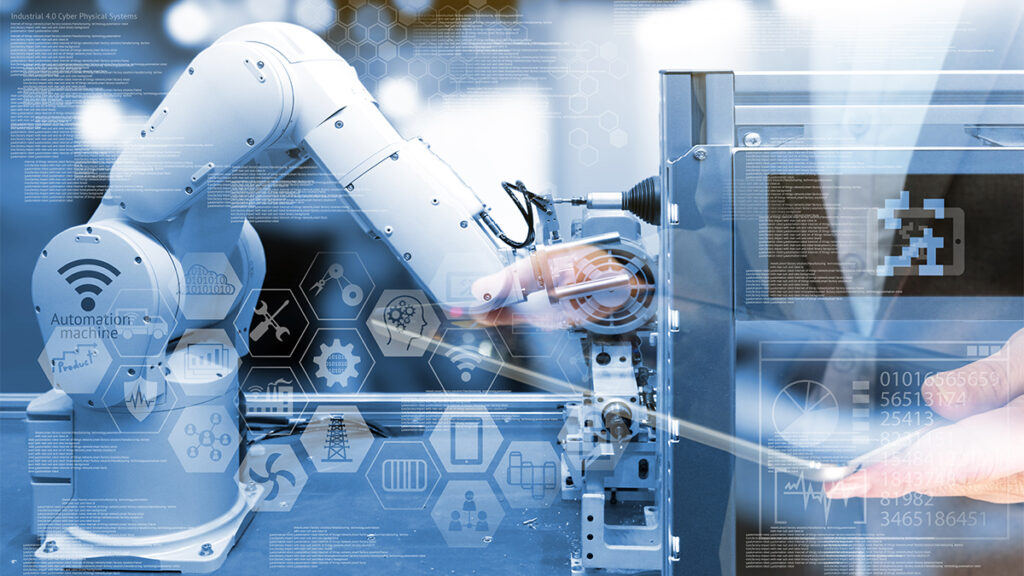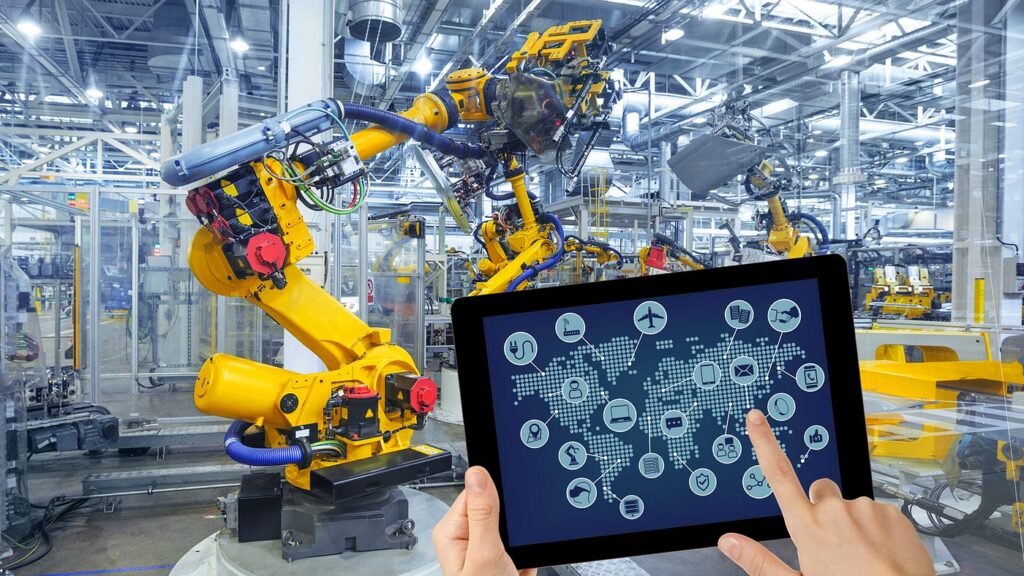Industrial Revolution 4.0 is helping Indian industries grow through advanced technology and innovation
Industrial Revolution 4.0, also called the Fourth Industrial Revolution, is transforming how factories in India work. It brings smart technologies like Artificial Intelligence (AI), the Internet of Things (IoT), robotics, machine learning, big data, and automation into the manufacturing process.
This shift connects systems, machines, and people in real time. As a result, factories can work with better speed, accuracy, and flexibility.

How Indian Industries Are Adopting It
Many industries in India such as automotive, electronics, textiles, pharmaceuticals, and engineering are now using these technologies. Their goal is to improve output, reduce errors, save costs, and meet global standards.
This change is timely. The Indian government is investing heavily in infrastructure and promoting initiatives like Make in India and Skill India. These efforts include production-linked incentives (PLI) to support manufacturers in upgrading their systems.
Key Benefits of Industrial Revolution 4.0 in India
Indian industries across sectors automotive, pharmaceuticals, electronics, textiles, and engineering are experiencing significant changes:
- Higher Productivity: Machines now have sensors that track performance and predict failures. This helps reduce downtime.
- Improved Quality: Automation reduces manual mistakes and keeps product quality consistent.
- Faster Decisions: Smart factories use data to make quick, accurate decisions.
- Energy Saving: Automated systems lower energy use and cut costs.
- Flexible Production: Manufacturers can quickly adjust production lines to meet market demands.
Thanks to supportive policies and tech infrastructure, more businesses are moving toward this modern setup.
Machine Shifting: Supporting Change on the Ground
In Industrial Revolution 4.0 Digital transformation is only part of the shift. Industries also need physical changes to support new systems. To install smart machines and update factory layouts, businesses often move equipment and redesign production areas.
This is where machine shifting plays a key role.
To support Industry 4.0 adoption, industries must carry out tasks like:
- Machine Shifting: Moving machines safely within or between sites.
- Factory Relocation: Transferring entire production units with careful planning.
- Assembly and Dismantling: Taking machines apart and putting them back together correctly.
- Loading and Unloading: Handling equipment using proper tools and safety methods.
- Transportation: Moving heavy equipment securely across different locations.
These steps help industries create a setup that matches the needs of modern technology.
Supporting Industrial Growth Across India
As industries adapt to Industrial Revolution 4.0, the need for organized, large-scale movement of machines and factory setups is increasing.
From expanding production facilities to integrating AI-enabled systems, companies require reliable support to physically prepare their plants for next-generation operations.
This demand is being met through structured relocation processes that combine safety, technical knowledge, and efficiency. Across India, such transitions are playing a silent but essential role in enabling smarter, leaner, and more responsive manufacturing systems.

Conclusion
Industrial Revolution 4.0 is a defining shift in how industries in India produce, manage, and deliver. It goes beyond digital upgrades it involves rethinking factory design, production flow, and equipment layout.
As industries adopt intelligent systems, the ability to physically move, reconfigure, and reinstall machinery becomes a key part of that transformation.
By understanding and executing these transitions effectively whether it’s assembling, dismantling, loading, unloading, or relocating machinery industries can ensure they’re ready for the demands of a smart manufacturing future.
India’s industrial growth depends not only on digital innovation but also on how well businesses adapt their physical infrastructure to support it.
